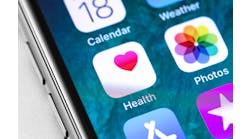Patients' expectations are changing, and health systems are taking notice. According to Erica Drazen, a partner at Falls Church, Va.-based CSC Healthcare, and Jared Rhoads, a senior research analyst, it is a trend whose time has come. In a recently published report, Drazen and Rhoads state that the focus previously placed on the provider and payer now includes the patient “as an equally important constituent.”
What this means, says Drazen, is that healthcare, an industry that has traditionally lagged behind in putting the “customer” at the center of the experience, is now trying to capitalize on the success that airlines and hotels have achieved by automating tasks like check-in. For CIOs, who often have to contend with implementations like CPOE that can be both time-consuming and costly, kiosks are a breath of fresh air. The technology isn't perfect, but it's uncomplicated and, as Drazen says, any time a hospital can more effectively compete for market share by leveraging a solution that is relatively easy to install, it's a no-brainer.
“Hospitals have a new set of customers that they need to worry about, and new priorities they need to think about,” she says. “And while you really do have to get the basics down first — we're not saying you should put in kiosks before you put in closed-loop medication management or anything like that — but once you get beyond that, you really have a choice about where you're going to make strategic investments. This is a perfect example of a good place to start.”
Self-service kiosks enable patients to check in, update their medical history, make payments using a credit card, sign documents, and schedule future appointments. Some models even incorporate wayfinding functionalities to help patients and visitors navigate a facility. Through these features, kiosks offer several potential benefits for organizations, including a streamlined patient registration process, shortened wait times, reduced administrative costs and improvements in revenue cycle management.
“There's a lot of interest in kiosks, partly because they're easy to implement — they're a proven technology in other industries. You can pilot them in one unit and you don't have to have a lot of infrastructure,” says Drazen, adding that kiosk use can result in time savings for staff members. Anything you do to speed up registration makes the flow of the practice more efficient,” she says. “So it's a win-win situation.”
Cutting down the ‘wait’ in the ER
Patient flow was a concept that seemed out of reach for the emergency room staff at Parkland Health and Hospital System in Dallas, a facility that hosts an average of 150,000 patients per year. Because of the consistently high volumes, the staff faced significant challenges, not just in helping patients get treated in a reasonable amount of time, but checking them in and prioritizing who needed treatment first.
In a high-pressure ED, anything that can ease the staff's burden is critical, says Kowitt. “The staff is happy because they can get to the cases that they should get to quickly, and now there's less of a chance of a patient crashing waiting for service. We have a very busy ER; the average dwell time is more than any of us would tolerate. This has been a step in fixing some of the problems, and everybody involved is very happy.”
Parkland's biggest motivators for implementing kiosks were to improve workflow and shorten patient wait times. At Scottsdale Healthcare, a three-hospital network in Scottsdale, Ariz., the objectives were similar; the difference between the two facilities is the environment in which kiosks were piloted. Instead of the ER, Scottsdale chose to place the Horizon Patient Kiosk from McKesson (San Francisco) in its outpatient surgery center to facilitate the registration process for patients who were already scheduled to undergo procedures, according to Vice President and CIO Jim Cramer.
The goal, which was to remove the stress from the check-in process for patients and their family members, was reached early in the process. Cramer says the kiosks have been received well, largely because patients are now notified prior to the surgical appointment that they have the option of checking themselves in, provided they are preregistered. Scottsdale utilizes a preregistration function that calls patients and confirms their information prior to the date of service.
“The outpatient surgery center usually has an influx of people early in the morning for the first surgeries of the day, so it really helped level out that wave of arrivals and the process was improved,” he says. “It's continued to work pretty well.”
According to Drazen, it's actually more commonplace to see kiosks in places where patients are either preregistered or are repeat visitors, such as facilities specializing in oncology or other types of chronic care. In these cases, checking in consists primarily of confirming information that is already in the system. Still, if a patient or caregiver can perform this action without waiting on line and filling out any paperwork, it's well worth it, according to Drazen. “Even if they save 15 minutes each time they come in, if you add them all up, it makes a big difference,” she says.
To speak or not to speak (with other systems)
Parkland and Scottsdale may have had a similar vision as to why they wanted to deploy kiosks, but one area in which they differ considerably is in interfacing — or, as in Parkland's case, opting not to.
When NCR/Galvanon first installed the kiosk at Parkland, an executive decision was made to execute a simple, straightforward implementation. “We let the design stay simple and very patient-focused,” says Kowitt, who feared that too many chefs might spoil the broth if high-level integration was initiated from the get-go. “We'd probably still be talking about what should it interface to and what should this be, and what should that be,” he says.
As it stands, the kiosk doesn't talk to any of Parkland's information systems. However, it's likely that in the future, it will connect to the system used by triage nurses on the backend, which would enable nurses to pull up information on patients and notify them if one was admitted to the ER at a previous time. But beyond that, Parkland has no plans to interface the kiosk.
“We don't want to complicate it to the patient,” says Kowitt. “We want to keep it simple in concept and straightforward in execution, which I think is really what you have to do with kiosks.”
The route Parkland has chosen offers a sensible solution for CIOs who aren't quite sure if kiosks are something they want to implement system-wide and don't mind taking a trial-and-error approach. “You can actually do a pilot of it, relatively inexpensively and relatively contained,” says Drazen. “It's easy to experiment with, and it's technology that so many people have experience with at the airport that they're not afraid of trying it.”
At Scottsdale, the process is very different — from the first time a patient registers right up until the payment is made, interfaces are everywhere. Patients aren't even eligible to check in using the kiosk unless they have already preregistered, and, subsequently, been entered into the system.
Once a patient has scheduled an appointment and preregistered, the information from the scheduling system is fed into the facility's registration and billing software from McKesson. As the patient or family member confirms information, the registration is initiated so that an account number is assigned and the appropriate labels and arm bands are printed, he says. Patients can also access consent documents and sign them electronically, according to Cramer.
Additionally, if patients post the co-payment prior to the appointment, it will show up during the registration process. If the patient chooses to pay by credit card, he says, “It flows to the billing system and takes any account balance for the individual from the billing system and asks them if they want to cover this patient portion as well.”
Working out the kinks
While Cramer is pleased with some aspects of the kiosks, he does feel that there are indeed issues that need to be ironed out — namely, physical placement.
“There were a couple of challenges that we ran into. We originally envisioned and agreed that we'd have it outside the registration area,” he says. However, concerns were voiced as to how patients who needed assistance negotiating the kiosks would obtain help. As a result, the staff opted to move the kiosk into the registration area. “If you're embedding it in, especially at a manned registration booth where somebody's sitting at a computer and a kiosk is at the front end of it, I think human tendency would be not to use the kiosk, but instead to have the person serve you.”
Cramer is optimistic that once patients become more accustomed to the kiosks, the placement issues will be worked out. In general, however, patient responses (which are captured through surveys) have been very positive, and Scottsdale is looking to deploy kiosks in the cancer center, where he says it will benefit the facility's repeat patients. There is also discussion, he says, of extending the technology to the outpatient surgery department at Scottsdale's 337-bed Osborn campus.
While Scottsdale's overall experience with kiosks hasn't been perfect, it's still been beneficial, and provides a solution that Cramer sees as part of the future — both at his facility and in the industry. “It hasn't been a home run, but it's been a hit,” he says. “I'd ideally like to see it go a little further, but there are a lot of other priorities and a lot of other changing activities on our plate. I think it will continue to evolve over time. Look at the airline industry — they eased it in, and now it's pretty predominant.”
At Parkland, Kowitt echoes similar sentiments, rating the implementation “someplace around three” on a difficulty scale from one to ten, as long as executives don't become overly ambitious. “These things should be very, very clearly functional, and simple in design, and easy to use. Resist the temptation to complicate it,” says Kowitt.
The potential for an easy win, says Rhoads, is one of the most attractive features kiosks can offer CIOs. The mold has already been broken by the airlines, he says, so “if you're comparing how much education and training you need to do with patients, this is nothing compared to something like an online portal, or the smartcard, or some of the other technologies that are a little bit more complex and do require a little more hand-holding.”
Patients, he says, have come to expect a higher level of service, and kiosks are one way to make that happen, without breaking a CIO's back — or bank, for that matter. “A lot of people are doing this. The staff like it, the patients like it, and it's inexpensive, comparatively speaking,” Rhoads says. “I think kiosks are definitely here and now.”
Sidebar
Takeaways
Patients are being viewed as discerning consumers; if hospitals and health systems fail to increase satisfaction with new tools and technologies, patients will take their business elsewhere.
Self-service kiosks offer a number of benefits to both patients and health systems, including automated check-in and simplified bill pay that can increase staff efficiency and reduce wait times.
Integration isn't necessarily the standard with kiosks; while some health centers choose to interface with registration, billing, and other applications, some opt to keep things simple with a standalone mode.
While kiosks are relatively easy to implement, there are still issues that need to be worked out, such as placement.
Sidebar
CONTINUE THE CONVERSATION
Wiki-fy this story at http://www.healthcare-informatics.com by posting comments, listing relevant resources and linking to associated events.





